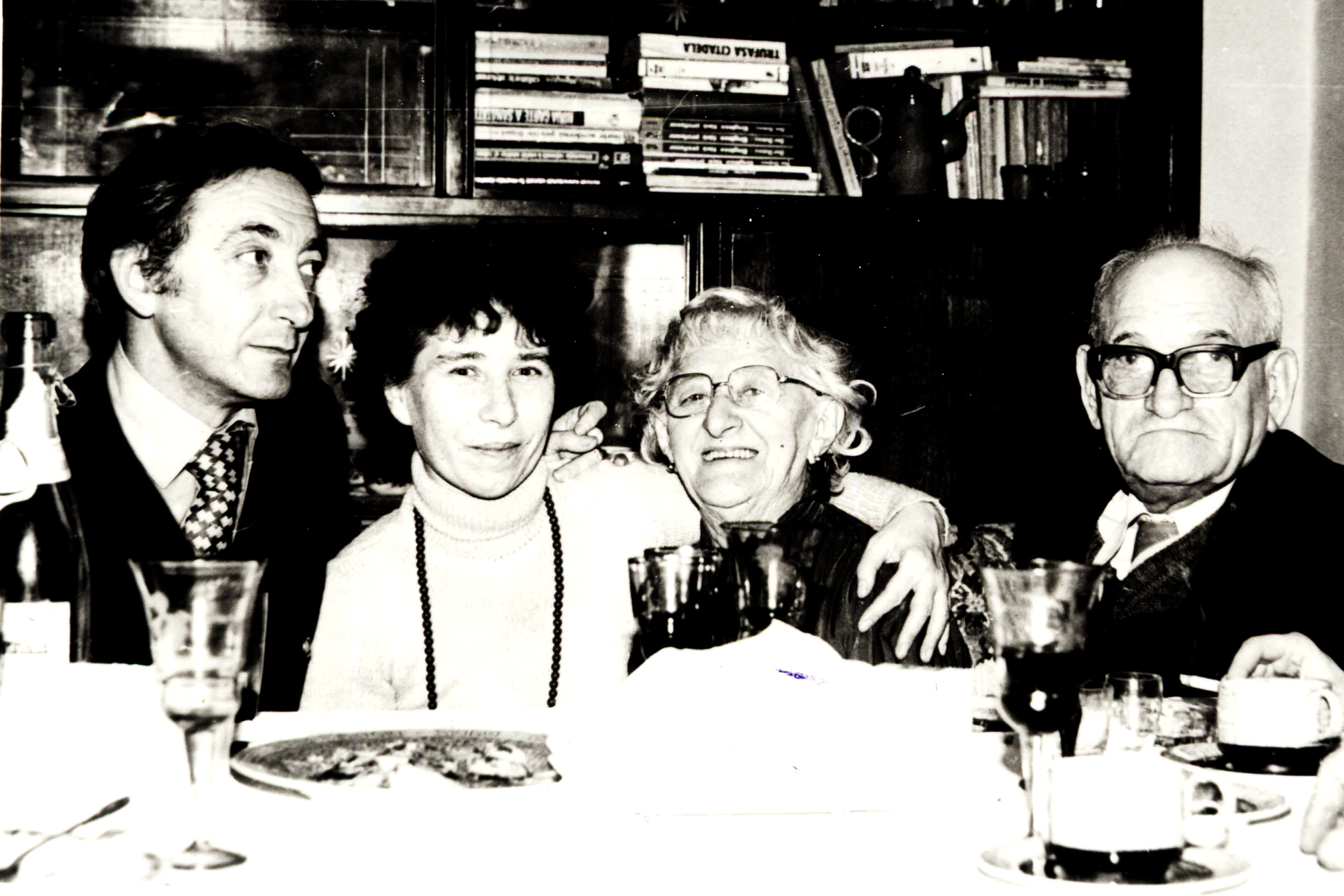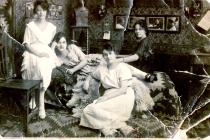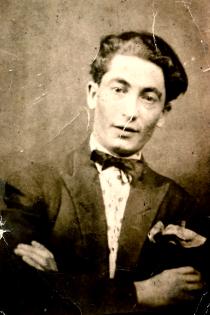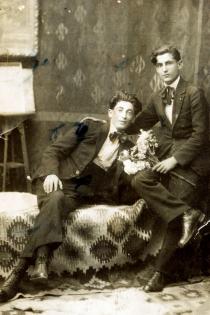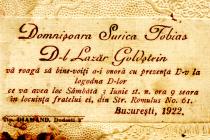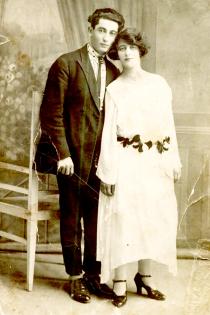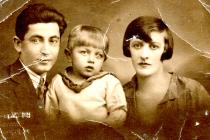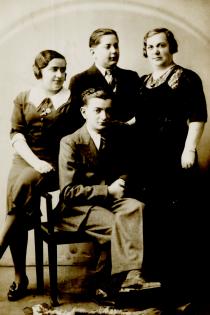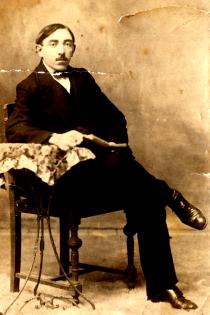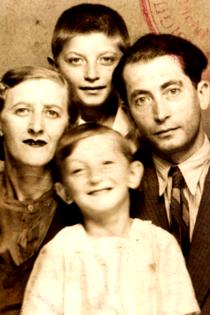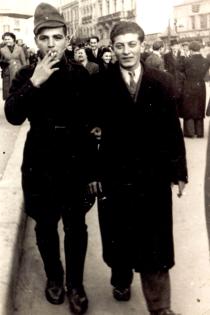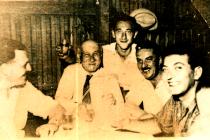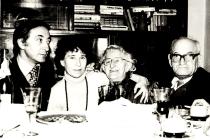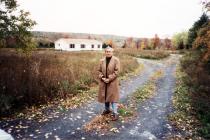From the left side this is me, Ticu Goldstein, my wife, Velea Goldstein, my mother, Surica Segal, and User Segal, my mother's second husband, at a Pesach seder, in 1975 or 1976. The photo was taken in my mother's apartment.
Many years after my father's death, my mother remarried, towards the end of the 1970s. Her new husband was a friend of our family, User Segal . He was a man with an extensive knowledge of the Jewish culture. He had tutored my brother in Hebrew, and he sometimes served as a substitute for the various rabbes, not in the synagogue, but in private meetings with the parishioners who always came asking for his advice. In my opinion, this User Segal was a fabulous character. He came from Russia after the socialist October Revolution Day, in 1917 or 1918. He escaped seven times from the hands of sundry Romanian authorities thanks to the seven rings (which were family heirlooms) he traded for his life. Someone had told him that the Romanian authorities were corrupt and could be 'bought' with money or other goods. So he sewed these rings in the lining of his coat and used them to save his life every time he was in danger. Many people said that the Romanian Jews were lucky because, unlike the Germans, who did their job thoroughly, the Romanians were corrupt and there were ways one could find to save one's life. In Romania, User Segal became an underground Communist and, during the Antonescu regime, he printed anti-fascist manifests right at the headquarters of the Official Gazette, where the anti-Jewish law-decrees were printed too. There was a man named Popescu there, the head of the printing shop, who collaborated with Segal and with other underground Communists. During the war, Segal was already pretty old, he was about 60.
My father had been a friend of Segal User's. As long as he lived, they visited each other quite often, helped each other when in need and went to parties together; but I don't know under which circumstances they met. When my father passed away, Segal helped my mother overcome that difficult moment. After a while, the two of them got married, as my mother was afraid to spend the rest of her life alone. It would have been a pity for her to stay a widow until the end of her days. After she turned 70, my mother developed a passion for reading. Although her only education had been the elementary school, she read with an unusual fervor. Through everything she stood for, my mother played an important part in my life. She died in 1984, at the age of 89. This time, it was me who recited the Kaddish and observed the Yahrzeit. She was buried next to my father, at the Jewish Cemetery on Giurgiului St.
My wife, Velea (nee Konig), was born in 1933, in Moscow. Her father was Romanian and her mother was Austrian. She came to Romania with her father, in 1958. Her maternal grandfather, Spielman, an engraver by trade, was a Jew who had converted to Christianity in order to marry a Christian woman. During the Nazi terror, he had to hide in the mountains because, according to the racial definition of the Jew, he was still considered a Jew, even if he had changed his faith. Velea went to the Medical School in Petersburg. In Romania, she worked as a physician at the Ana Aslan Geriatrics Institute. She was always interested in Mosaism and the Judaic tradition, partly due to my own preoccupations, partly due to the fact that she had had a Jewish grandfather. I met Velea thanks to a friend named Kadar (a Russian by origin) and thanks to music, which we both loved. This friend, who was a neighbor of my future wife's asked me one day if I was interested in meeting an interesting girl. He had probably asked her if she wasn't interested in meeting an interesting man. Kadar was sure the two of us were good for each other. Our first date took place at the Romanian Athenaeum, at a classical music concert.
